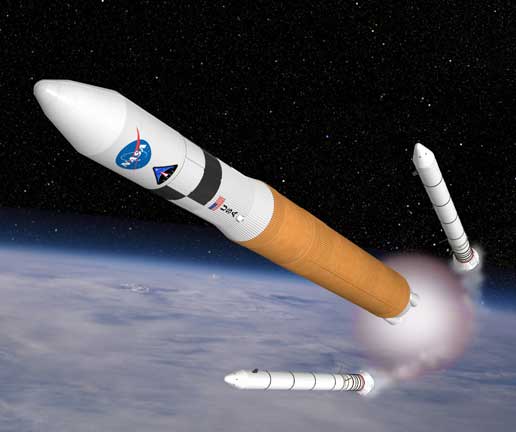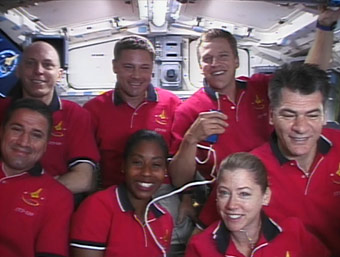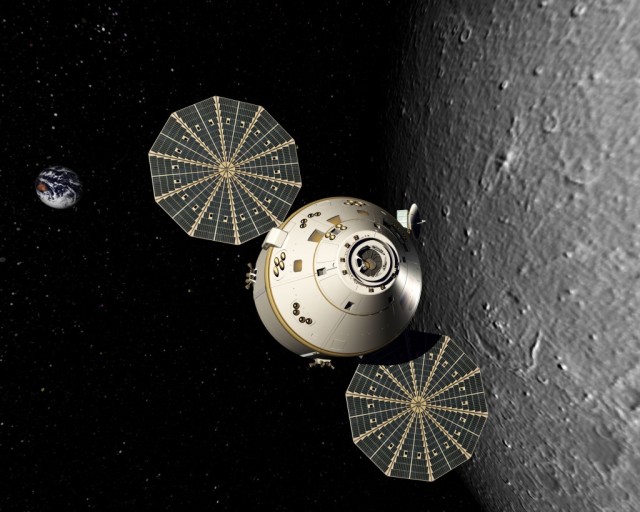STS-120
Report #27
2:45 a.m. CST Monday, Nov. 5, 2007
Mission Control Center, Houston, Texas
HOUSTON – All systems are go for this morning’s undocking of Space Shuttle Discovery from the International Space Station, completing 11 days of joint docked operations that saw the successful delivery of a new pressurized module and the repair of a damaged solar array wing.
The shuttle crewmembers got their wakeup call at 1:08 a.m. CST with “Roll Me Away” by Bob Seger, played for Pilot George Zamka, who will be at the controls of Discovery when it undocks from the station at 4:32 a.m.
Discovery will move in front of the station to a range of 400 feet, and then Zamka will begin a full one lap flyaround so his crewmates can get video and digital still imagery of the newly-configured station. The new features include the Harmony module docked to the Unity node, and the P6 Truss element, with both solar array wings fully deployed, at its permanent location on the port end of the truss.
When the shuttle again crosses directly in front of the station, Zamka will fire the reaction control system jets to begin Discovery’s separation. He’ll make the final separation jet firing at 6:15 a.m. to start Discovery’s trip home.
Late this morning Zamka will join Mission Specialists Scott Parazynski, Stephanie Wilson and Paolo Nespoli and Commander Pam Melroy at the controls of the shuttle robot arm to conduct a late inspection of the shuttle’s thermal protection system using the Orbiter Boom Sensor System. The crew will re-examine the reinforced carbon-carbon panels on both wings and the nose cap for any evidence of damage from orbital debris.
Mission Specialist Clay Anderson, who has been in space since his launch to the International Space Station in June, is scheduled for exercise today and tomorrow to help prepare his body to feel the pull of gravity again. Discovery is targeted to land at the Kennedy Space Center Wednesday at 12:02 p.m. CST.
The next STS-120 status report will be issued Monday afternoon or earlier if events warrant.




